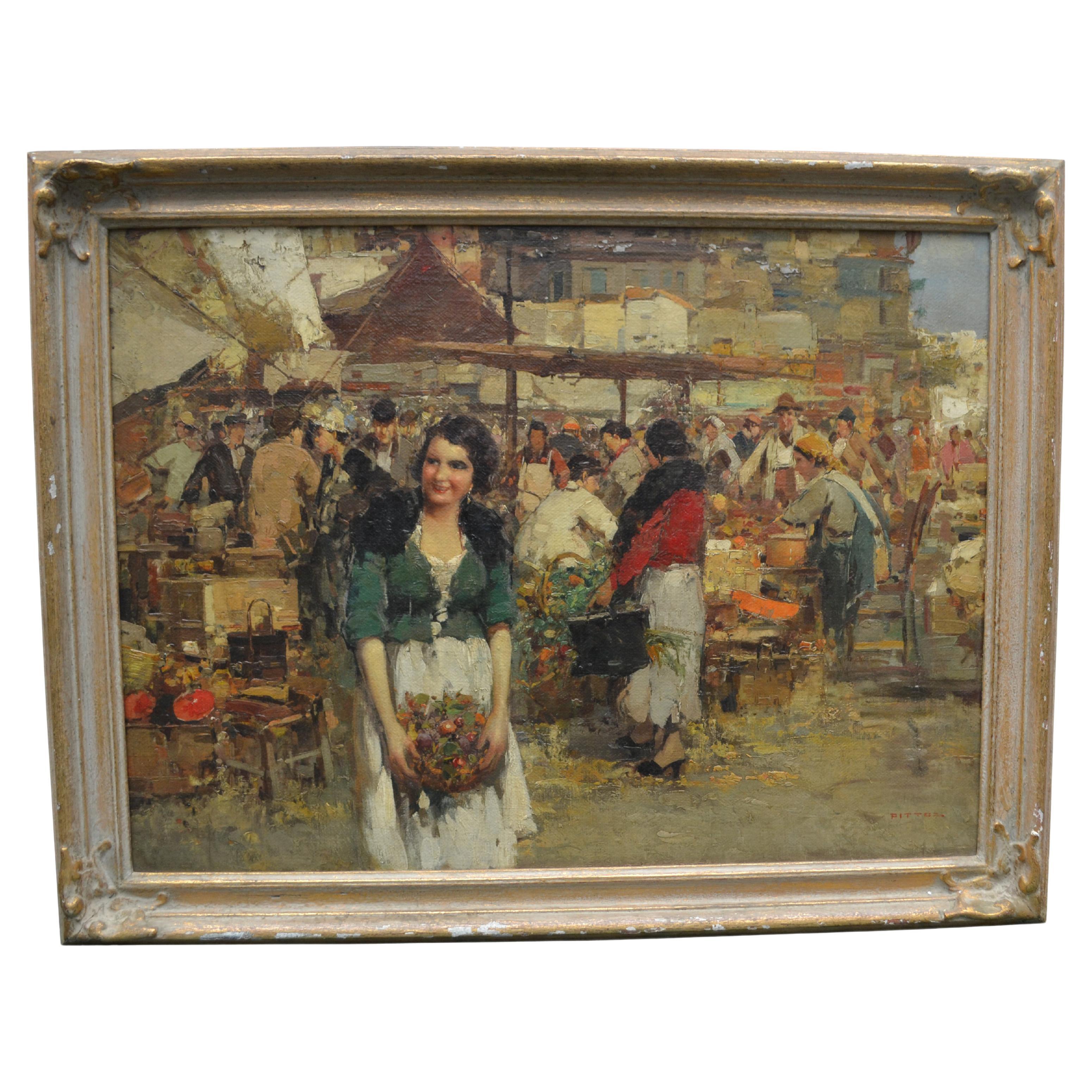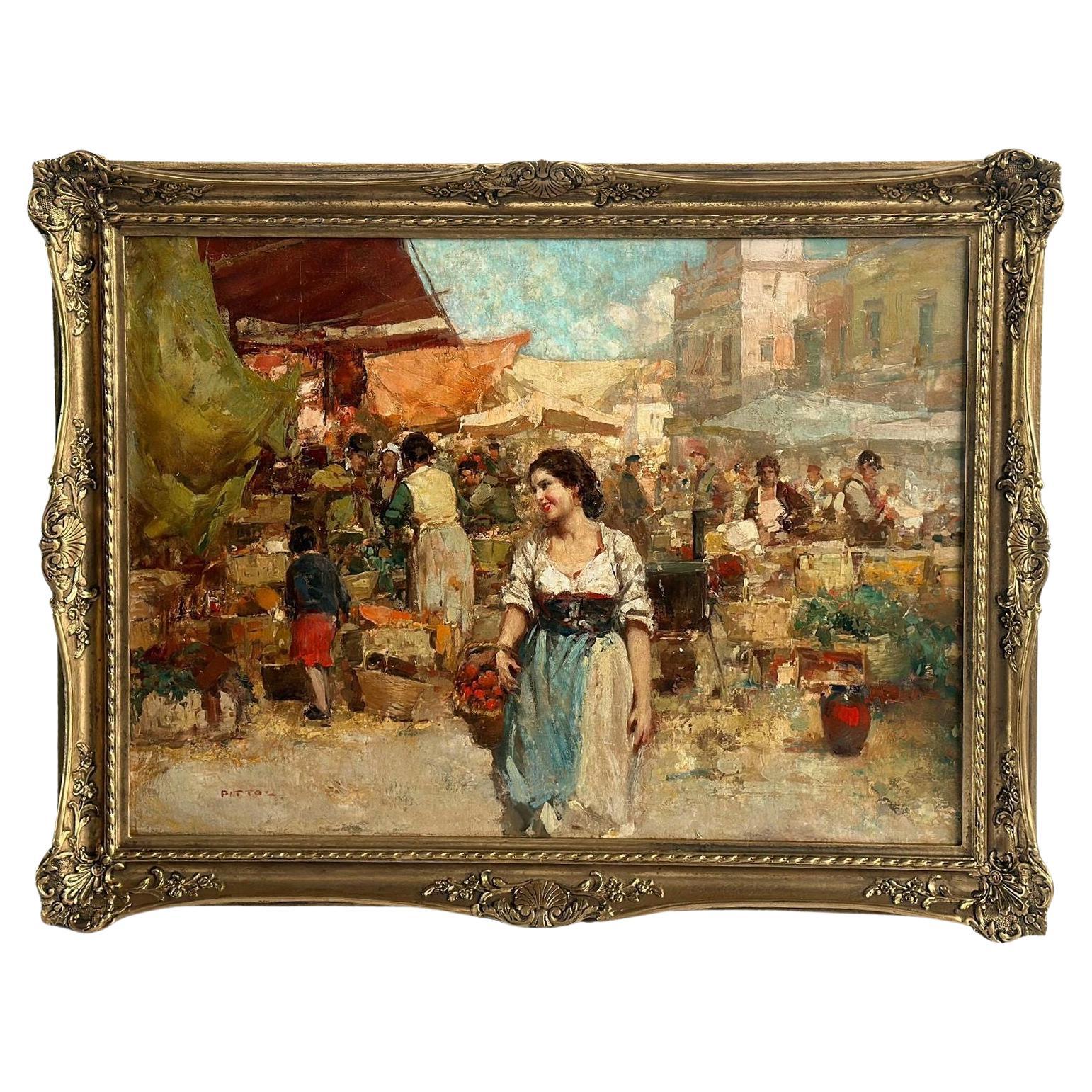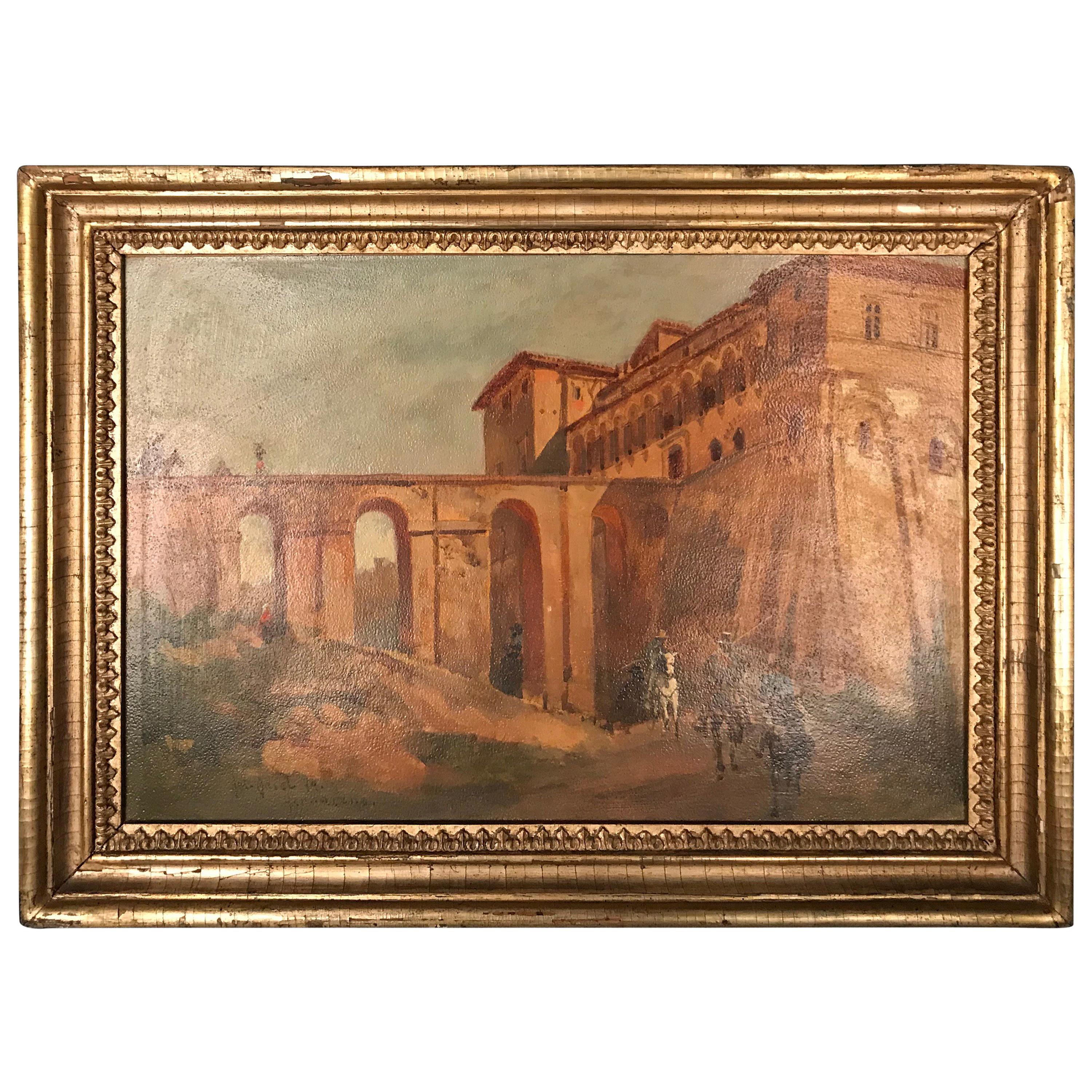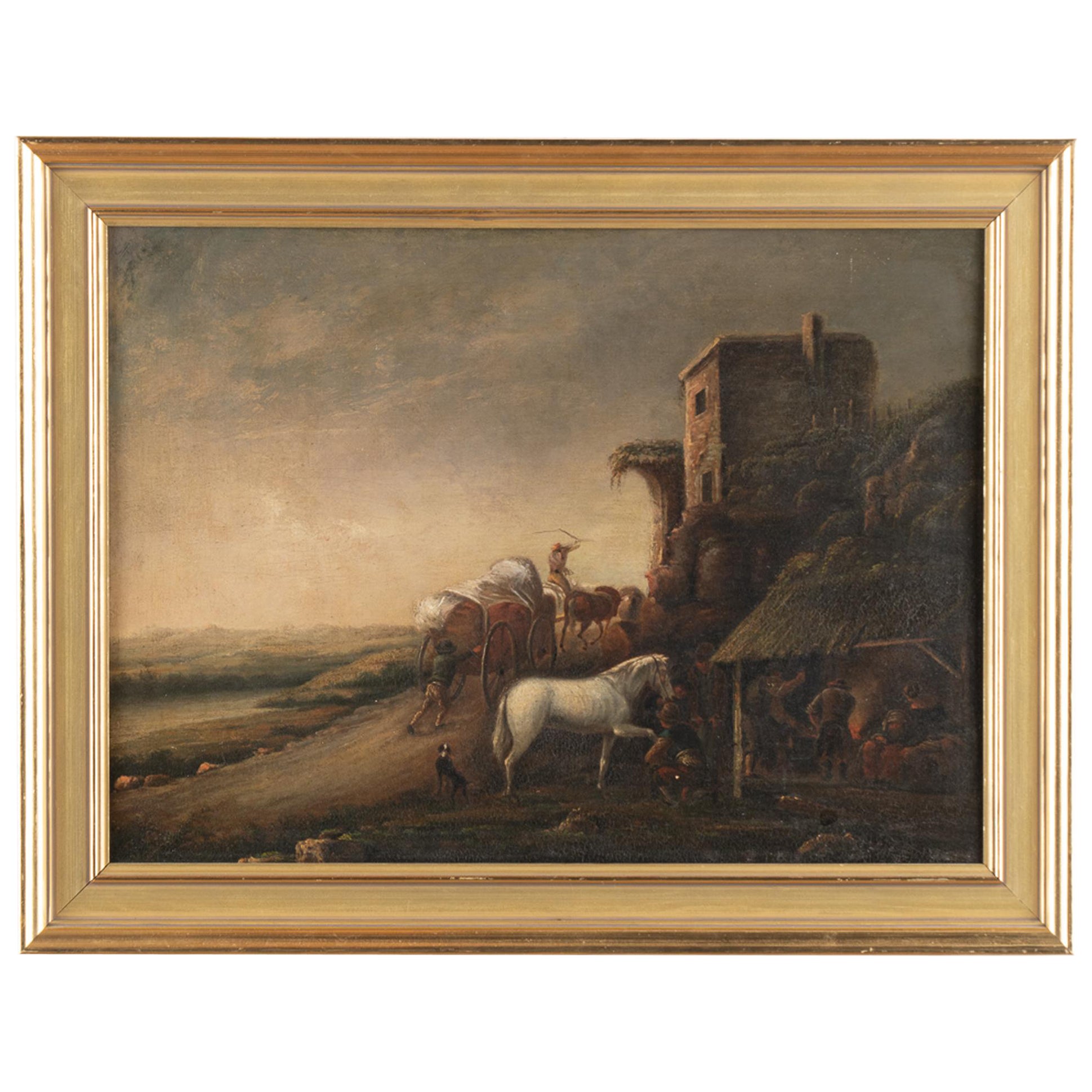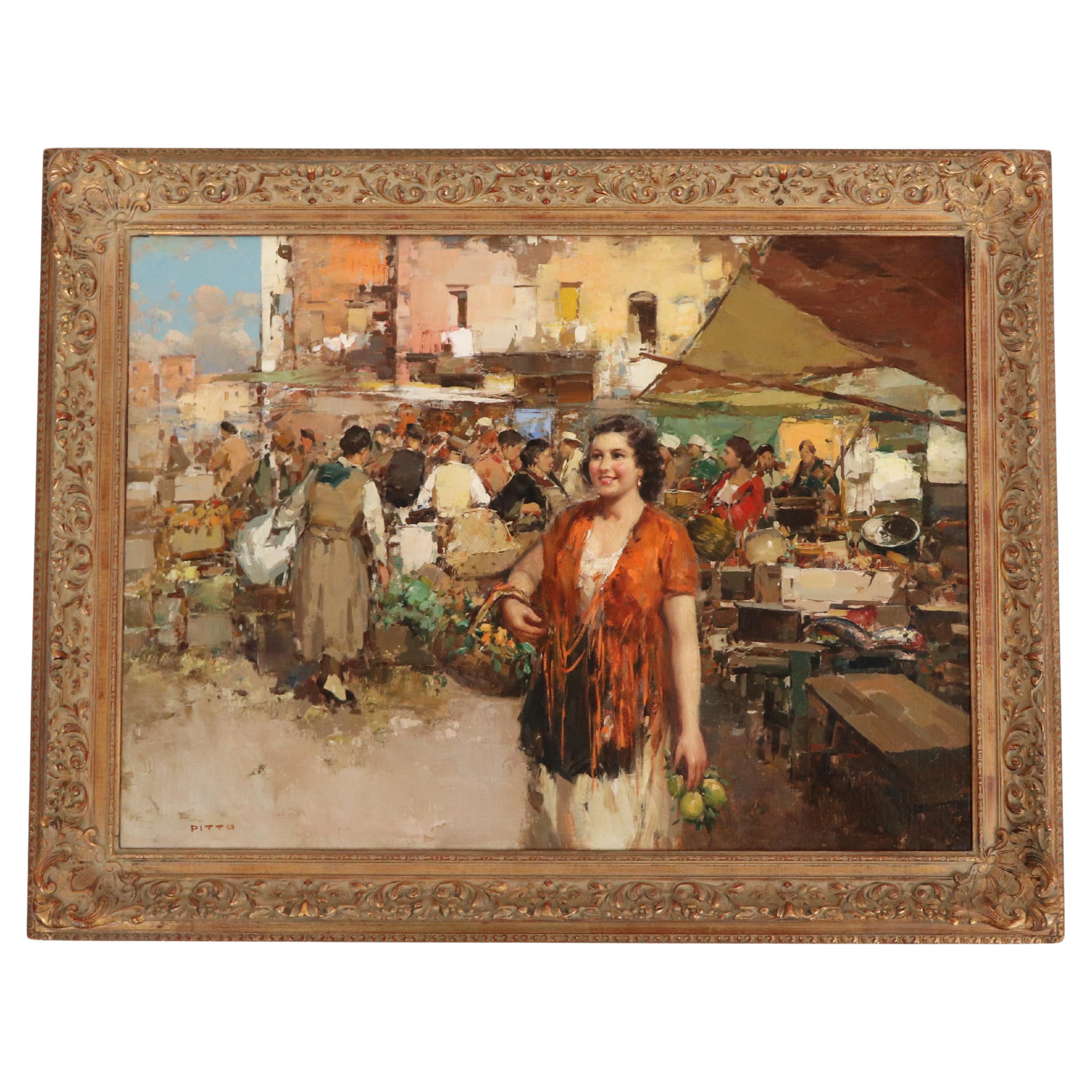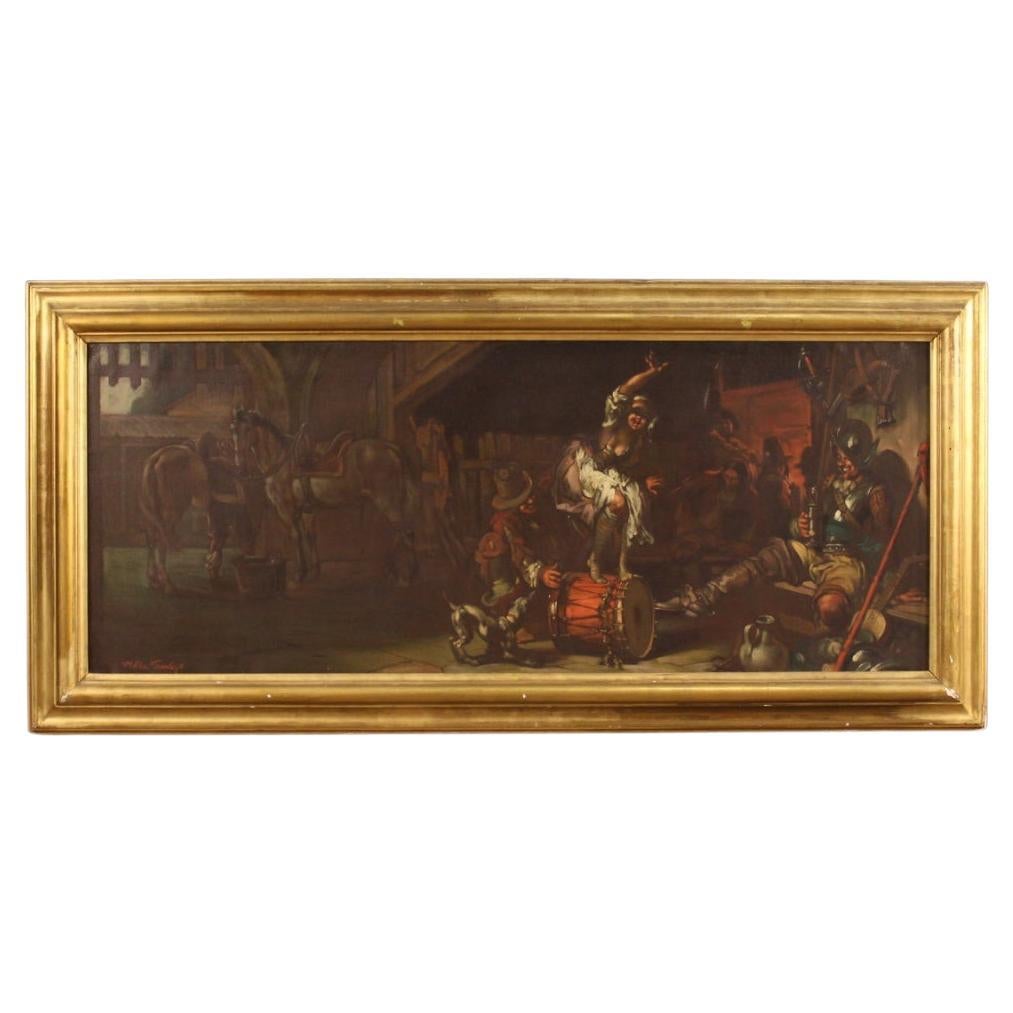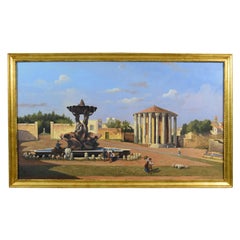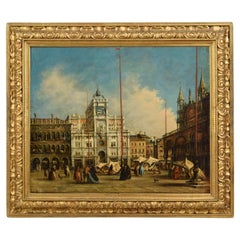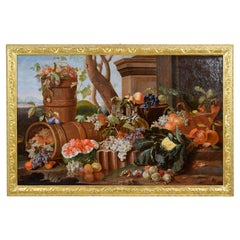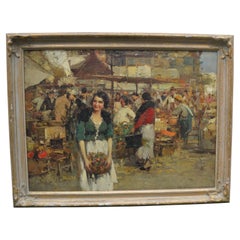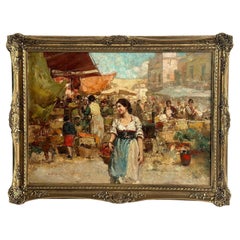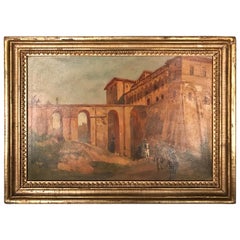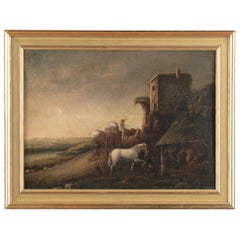Items Similar to 19th Century, Italian Oil on Canvas, Market at Giaveno Tower by Carlo Piacenza
Want more images or videos?
Request additional images or videos from the seller
1 of 8
19th Century, Italian Oil on Canvas, Market at Giaveno Tower by Carlo Piacenza
$19,769.37
£14,717.01
€16,500
CA$27,079.09
A$30,117.86
CHF 15,726.61
MX$366,502.36
NOK 200,852.84
SEK 188,364.53
DKK 125,608.74
Shipping
Retrieving quote...The 1stDibs Promise:
Authenticity Guarantee,
Money-Back Guarantee,
24-Hour Cancellation
About the Item
Carlo Piacenza (Italy -Turin, December 3, 1814 - Castiglione Torinese, 1887)
Market at the Giaveno Tower
Italy, Piedmont, 1850-1860
Oil on canvas
The oil on canvas painting represents a market scene in a town in which stands in a dominant position a circular tower of medieval age. The work can be attributed to the Italian Piedmontese painter Carlo Piacenza (Turin, 3 December 1814 - Castiglione Torinese, 1887). Another comparable work, made with oil on a panel, signed and dated in the lower left, is known from Piacenza and portraying a Market at the Tower. The architectural context represented in the latter is the same as the canvas, although there are some small variations. The same goes for the daily life scene described. The painting on panel, now in private collection, is published by Piergiorgio Dragone in « 19th century painters in Piedmont. Art and figurative culture. 1830-1865 », published by the CRT Bank of Turin. As can be seen from the comparison between the two works, the tower is the same, as the adjacent house on the left.
Some differences can be found by observing the access steps to the environment housed in the tower, perhaps a workshop, as well as the description of the wooden fences to protect the balconies of the house next door. In the version on canvas Piacenza inserts, in the masonry of the tower, a clock surrounded by terracotta tiles and describes in a better state of conservation the buildings that follow each other on the right. The horizontal cut of the canvas also allows the painter an accurate description of the surrounding environment. On the right a street of the town disappears on the horizon, while in the foreground, on the widening where the market is located, there is a wall surrounding a lush private garden. In both works the cloths spread out, some pots in terracotta with ornamental plants, the branch of a green plant that climbs the tower, as well as the inhabitants intent in their mercantile activities, give back the experience of the country and liven up the composition.
Through the comparison with some documents found, it is possible to identify the exact place represented in the paintings: it is one of the medieval towers of the town of Giaveno, near Turin in the north of Italy.
There is an etching signed by Francesco Mennyey (Turin 1889 - 1950), an internationally known painter and engraver in the first half of the 20th century, which represents the same view described by Piacenza. Mennyey signs and titles engraving “Giaveno”.
The comparison with the engraver, made around 1920, allows not only to ascertain the place of the painting in question, but also to show that the clock that Piacenza describes in the canvas is an addition of invention that the artist thought perhaps necessary to enrich the simple medieval architecture, balancing the whole with a chromatic appeal in the tones of red. The tower represented is still present today. Giaveno, a municipality not far from Turin and located at the mouth of the Val Sangone, has very ancient origins. The first settlement dates back to Roman times, but it gained importance in the central centuries of the Middle Ages, when it was subjected to the lordship of the powerful abbots of the Sacra di San Michele. In 1209, thanks to a donation by the Count of Savoy Thomas I, the abbots of San Michele fortified the square with a city wall and built a castle. In 1347, the abbot Rodolfo of Mombello raised the walls, interspersed with five circular towers. The perimeter of the Abbey Citadel is still quite readable in the current Via Roma. Three towers, although modified over the centuries, have survived the walls. A circular plan, made of mortar and river stones, they have at the top a decorative band in brick that forms a geometric design with small arches. Some historical photographs indicate the opening and closing of some windows and the evolution of the site.
Carlo Piacenza was born in Turin in 1814 and trained at the Accademia Albertina, a pupil of Cesare Biscarra and Pietro Fea. After a period of apprenticeship at the Bernese watercolourist Juillerat, he began to paint subjects inspired by the Piedmontese and Aosta countryside, with the intention of portraying the "true" of nature. Debuts to the Promotrice of Turin in 1843 presenting some views characterized by a calm naturalism and a romantic and idyllic intonation, sometimes melancholy. The gifts of a naturalist painter are intensified with the luministic research that the setting can offer. Piacenza thus achieves high results through its own and personal modulation of light, obtaining critical consents to the Turin exhibitions in which it regularly participates, in particular those held at the Promotrice and at the Circle of Artists. He dedicated himself to private teaching and had as students the children of Duke Ferdinand of Genoa, Thomas and Margaret of Savoy. Since 1856 he has also held the Chair of Drawing at the Turin Military Academy, which held until his death in 1887. The painting of Carlo Piacenza continues, alongside that of his friend and colleague Angelo Beccaria, a vein of serene landscape that had distinguished the first half of the 19th century. Piacenza, however, is innovative in the artistic landscape of Piedmont for a marked attention to concrete moments of daily news, thus giving connotations of verism to his works.
The canvas that is the subject of this study appears to be significant within the artistic path of Piacenza. The true description of the landscape is enlivened by the market scene and in which the chromatic research finds ample development in the rendering of the zones of shadow and the warm summer light. The work is also a document of historical interest for the architectural events that have affected the town of Giaveno, testimony of a place today strongly transformed by urban adaptations.
We apologize for any translation errors from Italian.
- Attributed to:Carlo Piacenza (Author)
- Dimensions:Height: 48.43 in (123 cm)Width: 34.26 in (87 cm)Depth: 1.19 in (3 cm)
- Style:Romantic (Of the Period)
- Materials and Techniques:
- Place of Origin:
- Period:
- Date of Manufacture:1850-1860
- Condition:
- Seller Location:IT
- Reference Number:1stDibs: LU4405218450502
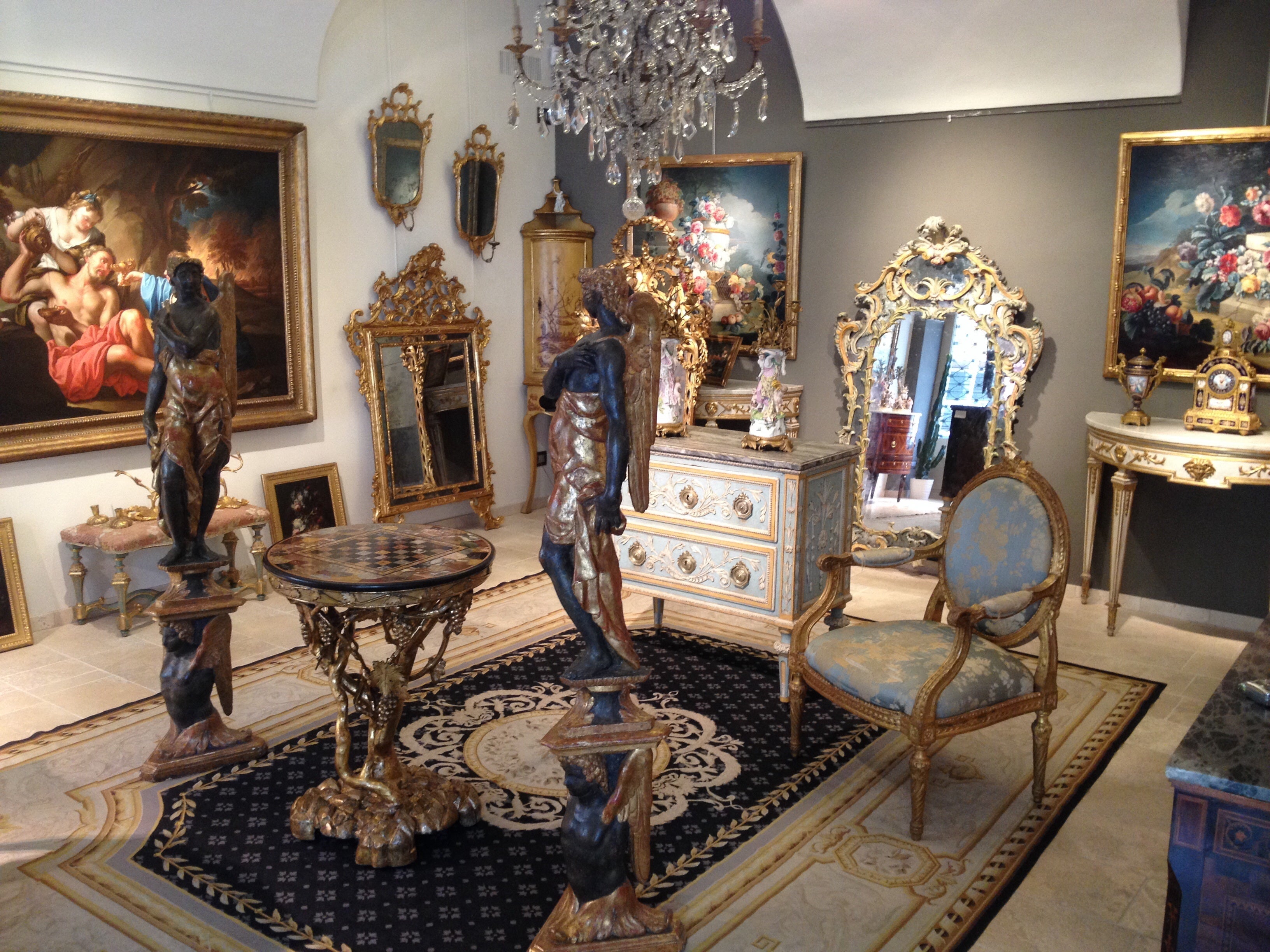
About the Seller
5.0
Platinum Seller
Premium sellers with a 4.7+ rating and 24-hour response times
Established in 1980
1stDibs seller since 2019
56 sales on 1stDibs
Typical response time: 1 hour
- ShippingRetrieving quote...Shipping from: Italy
- Return Policy
Authenticity Guarantee
In the unlikely event there’s an issue with an item’s authenticity, contact us within 1 year for a full refund. DetailsMoney-Back Guarantee
If your item is not as described, is damaged in transit, or does not arrive, contact us within 7 days for a full refund. Details24-Hour Cancellation
You have a 24-hour grace period in which to reconsider your purchase, with no questions asked.Vetted Professional Sellers
Our world-class sellers must adhere to strict standards for service and quality, maintaining the integrity of our listings.Price-Match Guarantee
If you find that a seller listed the same item for a lower price elsewhere, we’ll match it.Trusted Global Delivery
Our best-in-class carrier network provides specialized shipping options worldwide, including custom delivery.More From This Seller
View All19th Century, Oil on Canvas, Italian View of the Forum Boario of Rome
Located in IT
19th century, oil on canvas, Italian View of the forum Boario of Rome
The fine painting represents the Piazza della Bocca della Verità, located in the Ripa district, in the area of the Foro Boario, the oldest market in Rome (Italy). On the right is described the Roman Temple of about 100 B.C. wrongly called of Vesta, circular Corinthian monopter with cell of white marble ashlar and twenty fluted columns. From the 12th century it was reused as a church dedicated to Santo Stefano delle carrozze, then, in the 18th century, in Santa Maria del Sole. On the right you can see the fountain called "dei tritoni" which was built in 1717 on a design by architect Carlo Bizzaccheri. The fountain has a star-shaped bathtub, in honour of the commissioner, the Pope Clement XI...
Category
Antique Early 19th Century Italian Neoclassical Paintings
Materials
Canvas
19th Century, View of Piazza San Marco in Venice, Follower of Francesco Guardi
By Francesco Guardi
Located in IT
19th Century, View of Piazza San Marco in Venice, Follower of Francesco Guardi
Dimensions: frame, cm W 121.5 x H 105 x D 5.5. Canvas cm W 100 x H 81
The work, created by a Venetian ...
Category
Antique 19th Century Italian Neoclassical Paintings
Materials
Canvas
18th Century, Italian Oil on Canvas Still Life by Pietro Navarra
Located in IT
18th century, Italian oil on canvas still life by Pietro Navarra
Oil on canvas, canvas measures: cm H 103 x W 164, framed measures...
Category
Antique 18th Century Italian Baroque Paintings
Materials
Canvas
$52,718 Sale Price
20% Off
18th Century, Italian Painting Depicting Landscape with Watermill and Characters
Located in IT
18th century, Italian painting depicting landscape with watermill and characters
Oil on canvas; Measurements: frame cm L 103.5 x H 127 x P 5; painting L 93 x H 117.5
The painting...
Category
Antique Mid-18th Century Italian Rococo Paintings
Materials
Canvas
18th Centuy, Italian Painting with Landscape by Giovanni Battista Colomba
Located in IT
Giovanni Battista Innocenzo Colomba (1713 – 1793)
Landscape with figures
Oil on canvas, Frame H 102 x L 112 x P 8; canvas H 77 x L 87
The valuable painting, attributable to the pai...
Category
Antique Mid-18th Century Italian Rococo Paintings
Materials
Canvas
$22,045 Sale Price
20% Off
18th Century, Baroque Austran Painting by August Querfurt
Located in IT
August Querfurt (1696, Wolfenbüttel - 1761, Vienna)
Farmers and villagers at the entrance of a village
Oil on panel , cm 38,5 x 51. frame 66 x 53,5 x 4,5 cm
The valuable painting, ...
Category
Antique 18th Century Austrian Baroque Paintings
Materials
Wood
You May Also Like
Early 19 Century Italian Painting Titled "in the Market" by Giacomo Pittoz
Located in Vancouver, British Columbia
A happy and colourful painting of a smiling young woman holding a basket of flowers in an open fruit and flower market. People mill around her at other tented stalls picking and choo...
Category
Early 20th Century Italian Romantic Paintings
Materials
Paint
Oil on Canvas Italian Market Scene by Giuseppe Pitto
By Giuseppe Pitto
Located in Los Angeles, CA
Traditional oil on canvas by Giuseppe Pitto depicting a beautiful young woman in a street market; she stands out from the scene since the background, the buildings, villagers, and st...
Category
Vintage 1920s Italian Paintings
Materials
Canvas, Giltwood, Paint
Oil Painting Jacob, Julius Berlin 1842 Genazzano, Piscopal Palace and Bridgeacce
Located in Berlin, DE
illustration of episcopal palace and bridge access.
Oil painting circa 1874 from Jacob Julius (1842-1929)
Category
Antique 1870s Paintings
Materials
Wood
Original Oil on Board Painting of Italian Village, Italy circa 1800-20
Located in Round Top, TX
Original oil on board painting; Italian village portrayal with horse, blacksmith/ferrier, dog, horse drawn cart and more.
Age related craquelure throughout. Painting will likely ben...
Category
Antique Early 19th Century Italian Paintings
Materials
Wood, Paint
Oil on Canvas Italian Street Market Scene by Giuseppe Pitto
By Giuseppe Pitto
Located in Chicago, IL
Giuseppe Pitto (Italian 1857 - 1928) is often known for his paintings depicting pretty women in Italian street markets. This exuberantly painted scene i...
Category
Antique Late 19th Century Italian Other Paintings
Materials
Gesso, Canvas, Giltwood, Paint
20th Century Oil on Canvas Italian Popular Scene Painting Signed Mattia Traverso
Located in Vicoforte, Piedmont
Italian painting from the first half of the 20th century. Oil painting on canvas, first canvas, depicting tavern in eighteenth-century style with characters and horses. Very pleasant...
Category
Vintage 1920s Italian Paintings
Materials
Canvas
More Ways To Browse
Italian 19th Century Engravings
Mid Century Fence
Italian Tiles Painted
Italian Hand Painted Tiles
Death Clock
Antique Mercantile
Italian Plant Pots
Antique Fence Panels
Castle Windows
Mercantile Furniture
House Of Savoy
Three Train Clock
Castle Clock
Antique Bank Clock
Horizontal Clock
Roman Thomas Chairs
Antique Wooden Works Clock
Italian Red Terracotta Pots
